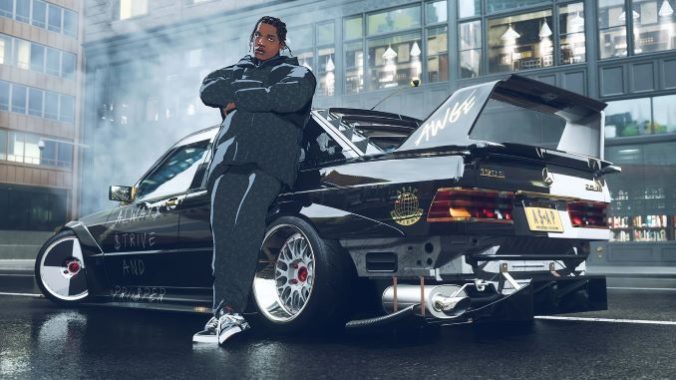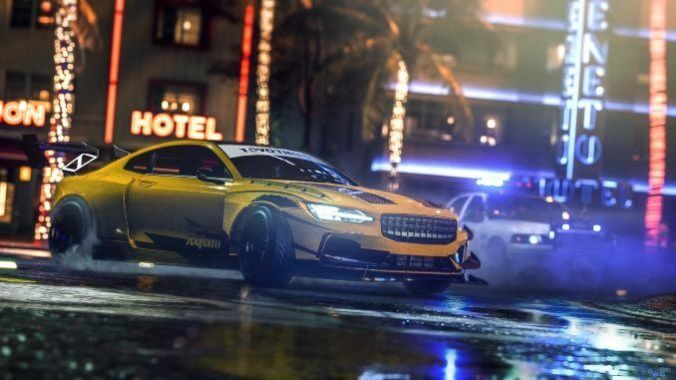Need for Speed Unbound‘s Here and the Time Is Right for Racing in the Street

According to my Xbox I’ve logged 35 hours in Need for Speed Unbound. I think that’s a glitch caused by the Quick Resume feature, but even at between 15 and 20 hours, it gave me a lot to think about. When I fired up Need for Speed Unbound, 2005’s Need for Speed: Most Wanted immediately came to mind. Like Unbound, Most Wanted was built around street racing and car chases, though with a greater emphasis on doling out retribution to your pursuers. Most Wanted was the first in the series to combine the Fast and Furious-style tuner-racer influence of the Underground brand of Need for Speed with the police chases of Need for Speed: Hot Pursuit. Underground 2 had an open world, and so did Most Wanted and its narrative sequel Need for Speed: Carbon. Over the next several years, the Need for Speed games would variously hew to their street racing roots or try more closed-track style racing, and alternate between being story-based and avoiding narratives. Developer Criterion Games, who was making the Burnout series of racing games (which didn’t license real life cars and were increasingly based around high-velocity crashes) at the time, culminating in 2008’s Burnout Paradise, would go on to make new games called Need for Speed: Hot Pursuit and Most Wanted in 2010 and 2012. After a few years off to assist on the Battlefield and Star Wars: Battlefront games, they’ve returned to racing, picking up from the now-dissolved Ghost Games, who rebooted Need for Speed in 2015.
Lacking familiarity with most of those games, I was jumping in here grasping at decade-old references, and it was fun (and useful) to use EA Play through Game Pass to briefly dabble with the steps the franchise has taken since then to reorient myself. Big takeaways: in 2015 (where they approximate L.A.), they were still using FMV like in 2005, featuring Faye Marsay of Game of Thrones and Andor, and assuming players are male and assigning the protagonist accordingly; in 2017 (set in and around an area based off of Las Vegas) you’re primarily a guy, but he comes from a crew that includes a woman that you sometimes switch to, channeling action heist movies; in 2019 (set in a large map based off of Miami) they begin to (re?)introduce a theme of overeager police (the intro cinematic sees a police officer talked out of killing a street racer by another police officer pointing out they’re on camera) while also allowing the player to choose an avatar, including multiple genders.
Need for Speed: Unbound is pulling on a lot of these connected threads. For instance, in-game radio ads frequently emphasize a tough-on-crime mayor funneling resources toward the police department to stop street racing. And, as players drive through the city delivering their fellow racers—whose avatars they see in the regular matches—to safehouses they can later use, occasionally conversation will drift toward the mayor and her crusade. Of course, any sort of broader societal critique falls flat when you are in fact pushing double digits in developed commercial and residential districts or flying through opposing traffic and tearing up guardrails. Besides the game’s problem with signposting which objects are easy to drive through and which will stop you, complaints about police overreach are undercut by driving in a way that would kill people in real life. But if a player’s heat level is low enough, police won’t even know them. The ability to drive 60 mph in opposing traffic in front of a cop, in addition to being able to speed by police without them hitting the sirens and, separately but distinctly, the fact the traffic lights don’t work, contribute to feeling like this is very much a clockwork world.
In Unbound—unlike the original Most Wanted—players’ wanted levels reset every day, as if the police’s minds reset every 24 hours. Unlike in that older game, players don’t need to change their car’s look or switch cars for a while to make the heat go down. The short memory of the patrolling police basically turns each adventure out into the streets turns into a wager where you have to weigh the amount of money you might make against how much you’ll stand to lose if the police takes it all. At least money and race restarts reset between day and night sessions. The combination of challenging computer-controlled racers and the high buy-ins for the races that propel the narrative forward create a difficult game-within-the-game. It’s also surprisingly forgiving in that if you fail the three-level qualifier race on a Saturday, you get sent back to Friday to earn more money. There’s no narrative reason for this winking bit of time travel, but it suits the game.
Similarly flirting between weighty reality and fantasy, the cartoon-inspired art style highlights the game’s photorealistic cars and environments through cel-shaded characters and driving effects. At first it made me think about the annoying impact comic book culture has had on mass media, but the aesthetic quickly grew on me. It makes everything feel light and fun, especially considering the narrative is based around the protagonist and her boss/surrogate father—Rydell, owner of Rydell’s Rides—being betrayed by their best friend in the prologue. Said best friend goes on to start a racing tournament, and basically ignores the protagonist when confronted at the first meet up. The slight edge and convoluted absurdity are easier to swallow when the whole deal looks and feels like a cartoon.

-

-

-

-

-

-

-

-

-

-

-

-

-

-

-

-

-

-

-

-

-

-

-

-

-

-

-

-

-

-

-

-

-

-

-

-

-

-

-

-








































